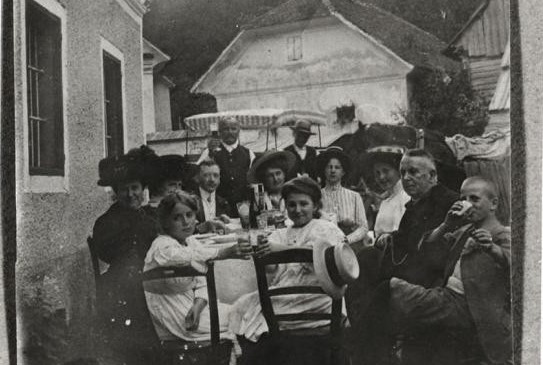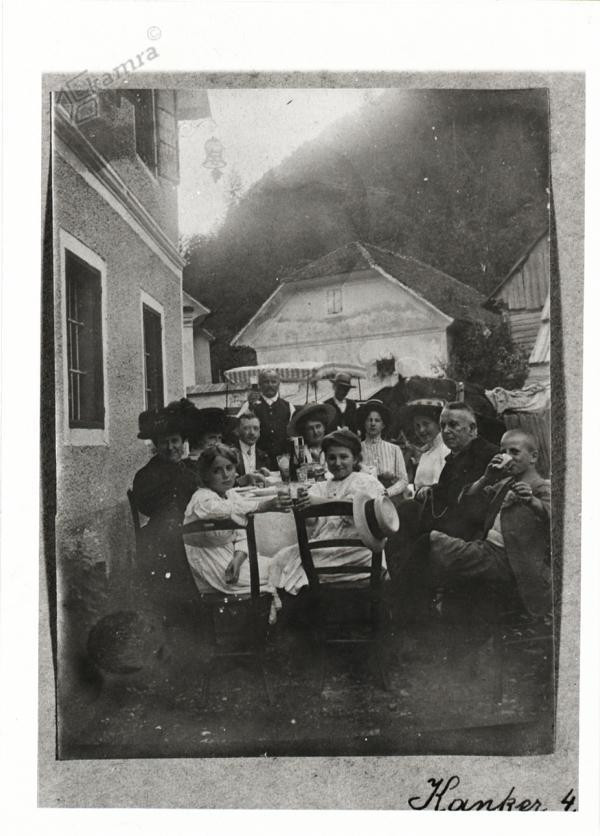Photos of Kanj Families from the Gorenjski Muzej Photo Library (Slovenia)

In the Photo Library of the Gorenjski Muzej, a fund consisting of black and white photographs of prominent Carniolan families is kept. The photographs included in this collection date from the 1970s until 1944. These are entrepreneurs, merchants, doctors and wealthier farmers. Namely, in the past, only those who could afford then expensive procedure were photographed.
The archive photographs reflect the time, way of life and circumstances that influenced the people portrayed.
In Kranj and its surroundings, at the end of the 19th century, and especially in the 20th century (until the Second World War), we can distinguish between bourgeois, artisan, working, subtenant and peasant families. At the beginning of the 20th century, the townspeople and craftsmen were separated, while in the 1920s more and more small craftsmen emerged, separating themselves from the townspeople (from large craftsmen, merchants and officials).
The city of Kranj entered the 20th century with the consequences of an economic downturn that had dragged on for several decades. At the end of the 1st st. The war in Kranj was dominated by small traders and craftsmen, while there were no major industrial companies. After 1921, when Ciril Pirc became the new mayor, the opportunity to revive the city’s economy was offered in the form of industrialization. By 1931, several larger factories, mostly textile, had been established. In the following decade, when the economic crisis and the saturation of the then Yugoslav market with textiles began, only smaller ones were opened, especially knitting and sewing plants.
In addition to the working class, similarly to other Slovenian cities, a completely new group of citizens was formed in Kranj: owners of capital, factory workers, directors and wholesalers. These formed the economic and possessive bourgeoisie. The fragmented business and economic structure was due to the general economic and financial situation. Only a few businessmen had the opportunity to cooperate with foreign capital, who, in addition to capital, had appropriate business contacts in banking circles and the ability to take advantage of economic and political circumstances.
The original source of this story can be found here.


